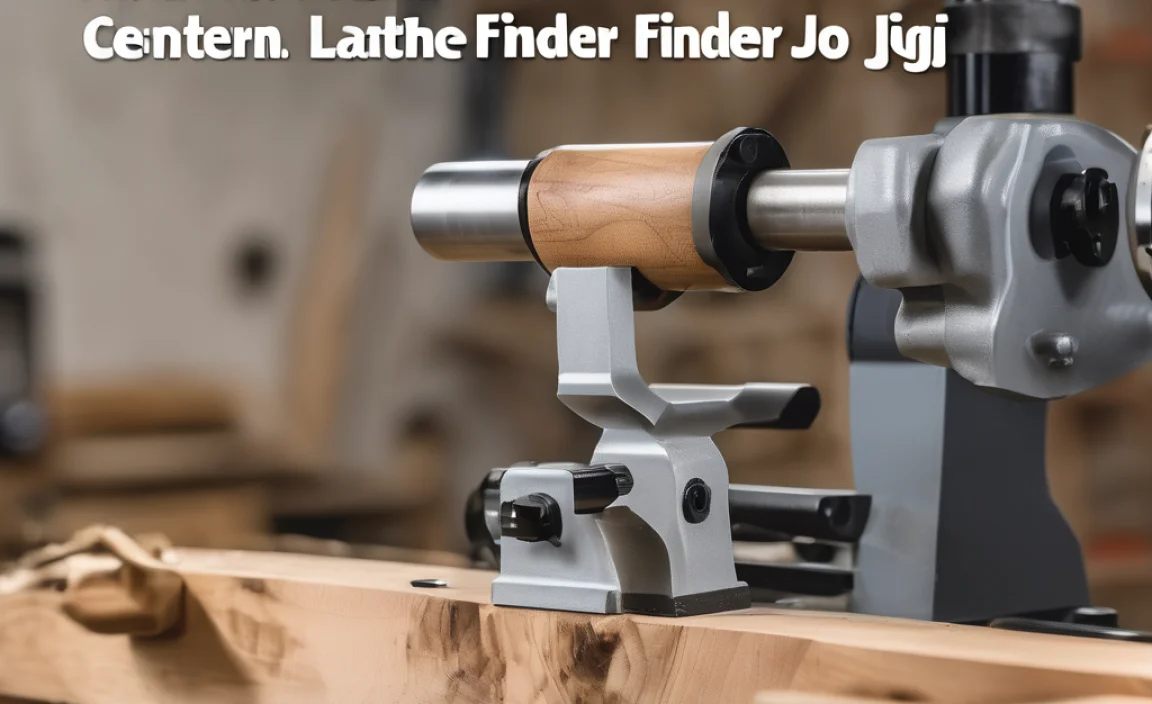A 1/8 inch 0.125 inch (3mm) carbide end mill with an 8mm shank, especially when extra-long, can precisely cut HDPE plastics and significantly minimize deflection for accurate results. Choosing the right tool and setup is key to controlling this common challenge.
Hey there, fellow makers and tinkerers! Daniel Bates here from Lathe Hub. Ever tried to make a super fine cut on something like HDPE plastic with a tiny end mill, only to have it wobble and jump around? That frustrating “deflection” is a common headache, especially when you’re working with smaller tools like a 1/8 inch (3mm) carbide end mill with an 8mm shank. It’s like trying to thread a needle in a hurricane! But don’t worry, we’re going to tackle this head-on. By understanding why it happens and using some smart techniques, you can achieve those clean, crisp cuts you’re aiming for. Get ready to put deflection in its place, so your projects can shine.
Understanding Your 1/8 Inch (3mm) Carbide End Mill and Deflection
So, what exactly is deflection when we’re talking about machining, and why does it love to mess with our tiny end mills? Simply put, deflection is the bending or springing of a cutting tool away from its intended path due to the forces of the cut itself. Think of it like a wet noodle trying to push through something solid – it’s going to bend!
With a small-diameter tool like a 1/8 inch (3mm) end mill, especially one with a longer flute length to reach deeper into your material, this bending becomes much more pronounced. The forces pushing against the cutting edges of the mill can easily overcome its rigidity. This is particularly true when cutting materials like HDPE (High-Density Polyethylene), which can have a bit of “give” or gumminess that exaggerates these forces.
Why is this a problem? Well, unexpected bending means your cut won’t be where you told your machine to make it. This leads to inaccuracies, rough surfaces, and can even damage your workpiece or the tool itself. For precision work, like creating intricate parts or tight-fitting components, uncontrolled deflection is the enemy of a good outcome.
Forces at Play: Why Your Tiny Mill Might Wobble
Several forces contribute to end mill deflection. Understanding these helps us combat them:
- Cutting Force: This is the primary force trying to push the cutter sideways. As the flutes engage the material, they exert pressure.
- Material Properties: Softer, “gummier” materials like HDPE can lead to higher cutting forces as the material tends to deform rather than chip cleanly.
- Tool Geometry: The number of flutes, flute length, and helix angle all influence how the tool interacts with the material and the resulting forces. An extra-long end mill, by necessity, has less rigidity than a short one.
- Spindle Speed (RPM): The rotational speed of your spindle affects the chip load – the amount of material each cutting edge removes. Too high an RPM for a given feed rate can lead to chips that are too small, causing rubbing and increased heat, which can exacerbate deflection.
- Feed Rate: This is how fast the tool moves through the material. A feed rate that’s too slow can cause the tool to rub and generate heat, while one that’s too fast might not allow the cutting edge to properly shear the material, leading to increased forces.
- Depth of Cut (DOC): Taking too deep a bite into the material at once significantly increases the cutting force.
When these forces combine, especially with a slender tool like our 1/8 inch (3mm) carbide end mill, you get that unwanted deflection. The goal is to minimize these forces or increase the tool’s resistance to them.
Choosing the Right 1/8 Inch (3mm) Carbide End Mill for HDPE
Not all 1/8 inch (3mm) end mills are created equal, especially when you’re pairing them with HDPE and aiming for minimal deflection. Here’s what to look for:
Carbide vs. High-Speed Steel (HSS)
For machining plastics like HDPE, and especially for harder materials, carbide is almost always the superior choice. Why?
- Rigidity: Carbide is significantly stiffer than HSS, meaning it bends less under load. This is crucial for controlling deflection.
- Heat Resistance: Carbide tools can withstand higher temperatures generated during cutting, which is beneficial for plastic machining where heat can cause melting or gumming.
- Edge Retention: Carbide holds a sharp edge much longer, leading to cleaner cuts and less wear on the tool over time.
Key Specifications for Your 1/8 Inch (3mm) End Mill
When selecting your 1/8 inch (3mm) end mill, pay close attention to these details:
- Diameter: We’re focusing on 1/8 inch (which is precisely 0.125 inches or about 3.175mm, but often referred to as 3mm in tooling).
- Shank Diameter: You specified an 8mm shank. This is a common size and offers a decent grip for the size of the end mill, but remember that an 8mm shank on a 1/8 inch (3mm) cutter means the shank is significantly larger than the cutting diameter. This can sometimes be an advantage for tool holders, but the flute length is still the primary driver of rigidity where cutting happens.
- Number of Flutes: This is critical for plastics.
- 2-Flute: Generally the best choice for soft plastics like HDPE. The larger gullet (space between flutes) allows for better chip evacuation, which is vital to prevent melting and clogging. Fewer cutting edges mean less friction and heat build-up.
- 4-Flute: Can be used, but often require lower feed rates and careful chip management in plastics. They tend to produce smaller chips and more heat.
- Helix Angle:
- High Helix (e.g., 45-60 degrees): These cutters slice through material with a shearing action, which is excellent for plastics. They produce a smoother finish and can reduce cutting forces, thus minimizing deflection.
- Standard Helix (e.g., 30 degrees): Still viable but might generate more heat and require more careful setup than high helix.
- Coating: For plastics, an uncoated carbide end mill is often perfectly fine. However, some coatings, like TiCN (Titanium Carbonitride) or even a specialized plastic coating, can provide a slicker surface, reducing friction and chip buildup.
- Length of Cut (LOC) / Effective Length: This is where “extra-long” comes in. If you need to cut deeper, you’ll need a longer length of cut. Be aware that the longer the LOC relative to the diameter and shank size, the more susceptible the end mill is to deflection. For consistent, precise work, you’ll want the shortest LOC that meets your needs.
Recommended End Mill Types for HDPE
Based on the above, for your 1/8 inch (3mm) carbide end mill on an 8mm shank for HDPE, I’d generally lean towards:
- A 2-flute, high-helix (around 45-60 degrees) carbide end mill.
- Look for one designed specifically for plastics or non-ferrous materials if available.
- If you need extra reach, prioritize a tool that still maintains reasonable rigidity for its length.
When I’m selecting tools for delicate work, I often check out resources from reputable manufacturers like Victor Machinery Exchange or even look at specifications from companies that focus on small machining tools. They usually provide detailed charts on tool performance and application recommendations.
Controlling Deflection: Setup and Machining Strategies
Even with the perfect tool, poor setup or aggressive machining practices will fight against you. Here’s how to set up for success and employ strategies to keep that 1/8 inch (3mm) end mill in line.
Workholding: Securing Your HDPE
The first line of defense against deflection is rock-solid workholding. If your workpiece can move, even slightly, it will amplify tool deflection.
- Clamps: Use appropriate clamps, preferably with soft jaws (rubber, plastic, or wood) to avoid marring the HDPE. Ensure clamps are positioned to provide firm support without obstructing the tool path.
- Double-Sided Tape: For thinner sheets of HDPE, strong double-sided tape can be effective when combined with strategic clamping or fixturing.
- Fixtures: If you are doing repetitive work, designing a dedicated fixture is the best way to ensure the part is held securely and repeatably.
- Vacuum Table: A vacuum table can be an excellent option for holding thin flat sheets securely, distributing holding force evenly.
Make sure your HDPE sheet is well-supported underneath. If there’s a gap, the plastic can flex downwards, leading to less predictable cuts.
Tool Holder and Spindle Setup
The connection between your spindle and the end mill is critical. Any runout (wobble) in the holder will directly translate to deflection and poor cut quality.
- Collets: For small end mills like this, a high-quality collet system is preferred over a basic drill chuck. Collets provide a much more concentric and rigid grip on the tool shank. Ensure the collet size accurately matches your 8mm shank end mill.
- Cleanliness: Always ensure your collets and the spindle taper are perfectly clean and free of debris or oil.
- Runout Check: If your machine has an indicator, check the runout at the spindle nose or with an indicator in the spindle. Minimal runout (ideally under 0.001 inches or 0.025mm) is essential.
The Cutting Process: How to Cut Smart
This is where most of the magic happens in controlling deflection. We need to reduce the forces acting on the tool.
Feed Rate and Spindle Speed (RPM) – The Balancing Act
This is arguably the most important factor. We want to achieve an optimal “chip load.” Chip load is the thickness of the material removed by each cutting edge per revolution. Ideally, we want a chip that is thick enough to be efficiently cut and cleared, not so thin it rubs and creates heat, and not so thick it overloads the tool.
A common formula for chip load is:
Chip Load (CL) = Feed Rate (F) / (Number of Flutes (N) Spindle Speed (S))
For HDPE, a good starting chip load for a 1/8 inch (3mm) end mill is often between 0.001″ and 0.003″ per tooth. This means:
- Spindle Speed (S): For HDPE with a 1/8 inch carbide end mill, you might start around 15,000 – 20,000 RPM. Higher RPMs allow for more control over small chip loads.
- Feed Rate (F): Once you have your S and desired CL, you can calculate F:
F = CLN S.- Example: If you choose a CL of 0.002″, N=2 flutes, and S=18,000 RPM:
F = 0.002 2 18,000 = 72 inches per minute (ipm), or about 1830 mm/min.
- Example: If you choose a CL of 0.002″, N=2 flutes, and S=18,000 RPM:
Crucially, always start at the lower end of recommended speeds and feeds and increase gradually while listening to the cut and observing the chips. If you hear chattering or see rough surfaces, you might be feeding too fast or taking too deep a cut. If you see melted plastic or fine dust, you might be feeding too slow (rubbing) or have too much engagement.
Consulting a CNC speed and feed calculator can be incredibly helpful. Many websites offer these, and it’s good to cross-reference recommendations from tool manufacturers. For example, ISCAR’s Speed and Feed Calculator provides starting points for various materials and tools – though you’ll adapt their general suggestions for a small, specific tool like yours.
Depth of Cut (DOC) and Stepover
To minimize deflection, we need to reduce the load on the tool during each pass. This means taking lighter cuts.
- Depth of Cut (DOC): For a 1/8 inch (3mm) end mill, a radial depth of cut (how much it cuts sideways) is often more critical than axial (how deep it plunges downwards). With a 1/8″ diameter, you might only want to engage 0.040″ to 0.060″ (1mm to 1.5mm) radially, and perhaps plunge 0.100″ to 0.200″ (2.5mm to 5mm) axially in HDPE, depending on the rigidity of your setup. Always err on the side of caution.
- Stepover: This is how much the tool moves sideways in each pass to remove the material. For general pocketing, a stepover of 30-50% of the tool diameter is common. For precise profiling or finishing, you might use a smaller stepover (e.g., 10-20% or even less).
- Climb Milling vs. Conventional Milling:
- Climb Milling: The tool rotates in the same direction as its travel across the workpiece. This results in thinner chips at the start of the cut and thicker chips at the end, generally producing a better surface finish and reducing upward forces that can cause deflection. This is usually preferred for plastics.
- Conventional Milling: The tool rotates against the direction of its travel. This creates thicker chips at the start, which can lead to rubbing and increased force, thus promoting deflection.
For controlling deflection, especially in softer materials like HDPE, climb milling is almost always the better choice.
Example Machining Parameters for HDPE with a 1/8″ (3mm) Carbide End Mill:
This is a starting point, and you must* adjust based on your machine, rigidity, and specific HDPE grade.
| Parameter | Value for HDPE (1/8″ 2-Flute, 8mm Shank) | Notes |
|---|---|---|
| Spindle Speed (RPM) | 15,000 – 20,000 | Start low, increase if needed. |
| Feed Rate (ipm / mm/min) | 60 – 150 ipm / 1500 – 3800 mm/min | Calculated from Chip Load. Listen to the cut. |
| Chip Load per Tooth (in/tooth / mm/tooth) | 0.002″ – 0.003″ / 0.05mm – 0.08mm | The target for efficient cutting. |
| Axial Depth of Cut (DOC) | 0.100″ – 0.200″ / 2.5mm – 5mm | For plunge/pocketing. |
| Radial Depth of Cut (Stepover) | 0.040″ – 0.060″ / 1mm – 1.5mm | For slotting/full width, use a smaller DOC. |
| Stepover (for pocketing) | 30% – 50% of diameter | Adjust for surface finish. |
| Milling Strategy | Climb Milling | Essential for plastics. |
| Coolant/Lubrication | Air Blast or Dry | HDPE rarely needs liquid coolant. Air blast helps clear chips. |
Remember to always start with conservative settings and incrementally increase them as you gain confidence. Observe the chips produced—they should be well-formed, not gummy or dust-like. Listen for any unusual noises like chatter or squealing, which indicate you need to adjust your speeds or feeds.
Advanced Techniques for Minimal Deflection
Once you’ve mastered the basics, here are a couple of advanced tips to squeeze out even more precision:
Tab and Bridge Machining
Especially when profiling a part from a sheet, the piece can shift or chatter as the last bit of material is cut.





